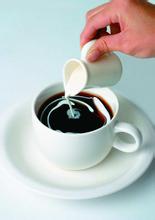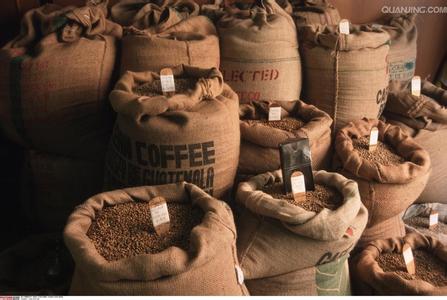Honey-treated coffee beans sun-washed Arabica coffee beans characteristics of grinding scale production area
Honey-treated coffee beans sun-washed Arabica coffee beans characteristics of grinding scale production area
The coffee fruit picked from the coffee field must not be mistaken. It must be sent to the processing plant on the same day and underdeveloped. Immature. Ripe fruit retains ripe red fruit. The most simple and effective way is to pour all the fruit into a large trough. Ripe fruit and half-green and half-red fruit are heavier and sink to the bottom of the trough, while those underdeveloped small fruits. Rotten fruit that is overripe. Lighter ones such as damaged fruits, branches and leaves will float on the surface of the water, thus weeding out the floating beans that cannot be imported. The beans filtered out by the sink sieve, that is, good beans enter the next stage, that is, sun, half-sun and washing, half-washing. Here are the differences, advantages and disadvantages of these four ways.
The sun drying method is also called "natural drying method" because it uses natural sunlight to dry the fruits and raw beans of coffee. Due to the use of artificial and natural treatment methods in the process, the sun-cured beans look irregular and unflattering in appearance.
1. Choose beans:
Put the harvested fruit in the water tank, and the ripe fruit will sink, while the unripe and overripe fruit will float up and can be removed.
2, dry:
Put the selected ripe fruit in the square and expose it for 5-6 days until it is fully dry. At this time, the fruit becomes dark brown and the moisture content is 13%.
3, shelling:
After drying, the peel becomes fragile and easy to fall off, and can be removed by machine. Farms run by enterprises usually have their own shelling factories, while small farms are processed by processing centers.
4, selection and grading:
Exquisite farms identify defective beans manually or by machine, pick them out and throw them away. Manual selection usually uses a transmission belt about 1 meter wide, with several female workers sitting on both sides visually picking out bad beans, and some good farms are even selected several times until defective beans are not seen. Machine selection rules use computers to identify defective beans, followed by a grading process that divides coffee beans into several quality grades according to established standards. Good coffee enters the selected coffee market, while bad coffee flows into the commercial coffee market.
5, polish:
The exocarp and endocarp can only be removed by shelling treatment. At this time, the silver film is still wrapped in the outer layer of the seed, and the film has to be ground off by machine. Then, pack the coffee beans into a bag of 60KG. The weight of bags varies slightly from region to region. Most of them use sacks.

Important Notice :
前街咖啡 FrontStreet Coffee has moved to new addredd:
FrontStreet Coffee Address: 315,Donghua East Road,GuangZhou
Tel:020 38364473
- Prev

Coffee extraction most standard time espresso extraction time characteristics of espresso extraction mode
The most standard time of coffee extraction [- the extraction time of espresso represents the concentration, and the soluble matter in a cup of coffee accounts for the total weight of coffee. So the higher the concentration, the stronger your coffee. Generally speaking, the reason why we drink espresso is very strong, because its concentration is about 8% Mur11%, while filtered coffee is very light, because its concentration is about 1.15-1.
- Next

The milk foam doesn't float when you pull flowers in coffee.-how to make coffee flowers
The milk foam won't float when you pull flowers in coffee-how to make coffee flowers 1. After the machine reaches the correct temperature, turn on the steam switch, release the water that always exists in the steam pipe, and then turn off the steam switch. two。 Put the nozzle below the surface of the milk and turn on the steam. If you turn on the steam when the nozzle is above the liquid level, you will get larger bubbles, and in order to get rid of these bubbles, you
Related
- What is the meaning of lactic acid fermentation with coffee bean treatment?
- How to judge the state of foam by sound?
- How does the latte pull out the unicorn pattern? Come to get for a little trick to improve the flower pull!
- Will flower pulling affect the taste of the latte?
- Do you know the history of coffee?
- The difference between honey treatment and sun washing what is raisin honey treatment?
- What kind of milk can a novice use to make coffee foam to keep the foam longer? The correct method and skills of milking tutorial sharing
- Why do washed coffee beans taste sour? Flavor characteristics of washed Coffee
- Introduction to the skill of how to practice the size and height of water injection around the circle of hand-brewed coffee
- How do beginners practice coffee flower drawing from scratch?

